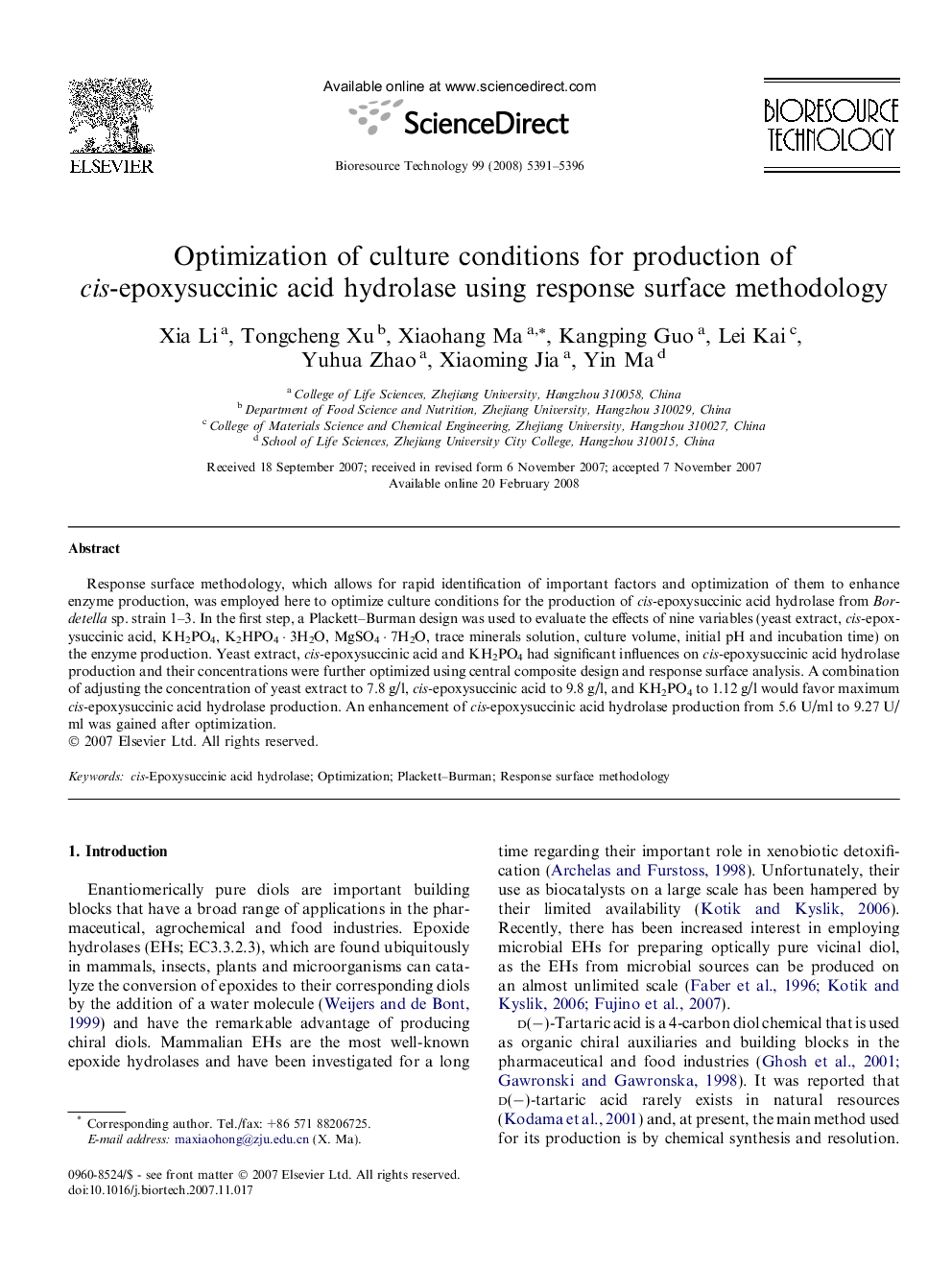| Article ID | Journal | Published Year | Pages | File Type |
|---|---|---|---|---|
| 685088 | Bioresource Technology | 2008 | 6 Pages |
Response surface methodology, which allows for rapid identification of important factors and optimization of them to enhance enzyme production, was employed here to optimize culture conditions for the production of cis-epoxysuccinic acid hydrolase from Bordetella sp. strain 1–3. In the first step, a Plackett–Burman design was used to evaluate the effects of nine variables (yeast extract, cis-epoxysuccinic acid, KH2PO4, K2HPO4 · 3H2O, MgSO4 · 7H2O, trace minerals solution, culture volume, initial pH and incubation time) on the enzyme production. Yeast extract, cis-epoxysuccinic acid and KH2PO4 had significant influences on cis-epoxysuccinic acid hydrolase production and their concentrations were further optimized using central composite design and response surface analysis. A combination of adjusting the concentration of yeast extract to 7.8 g/l, cis-epoxysuccinic acid to 9.8 g/l, and KH2PO4 to 1.12 g/l would favor maximum cis-epoxysuccinic acid hydrolase production. An enhancement of cis-epoxysuccinic acid hydrolase production from 5.6 U/ml to 9.27 U/ml was gained after optimization.
